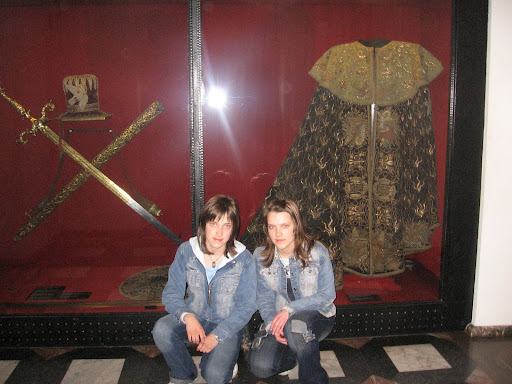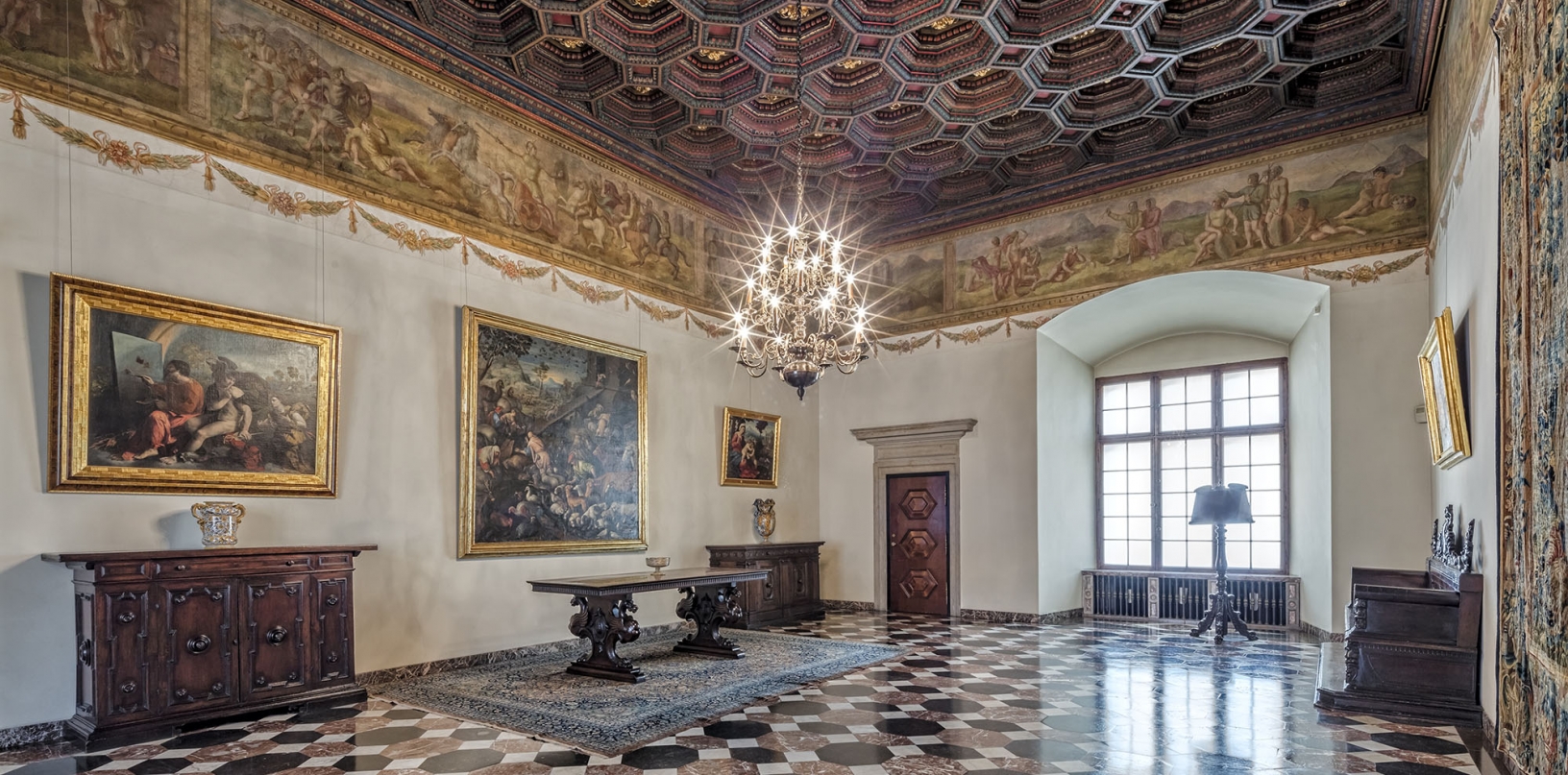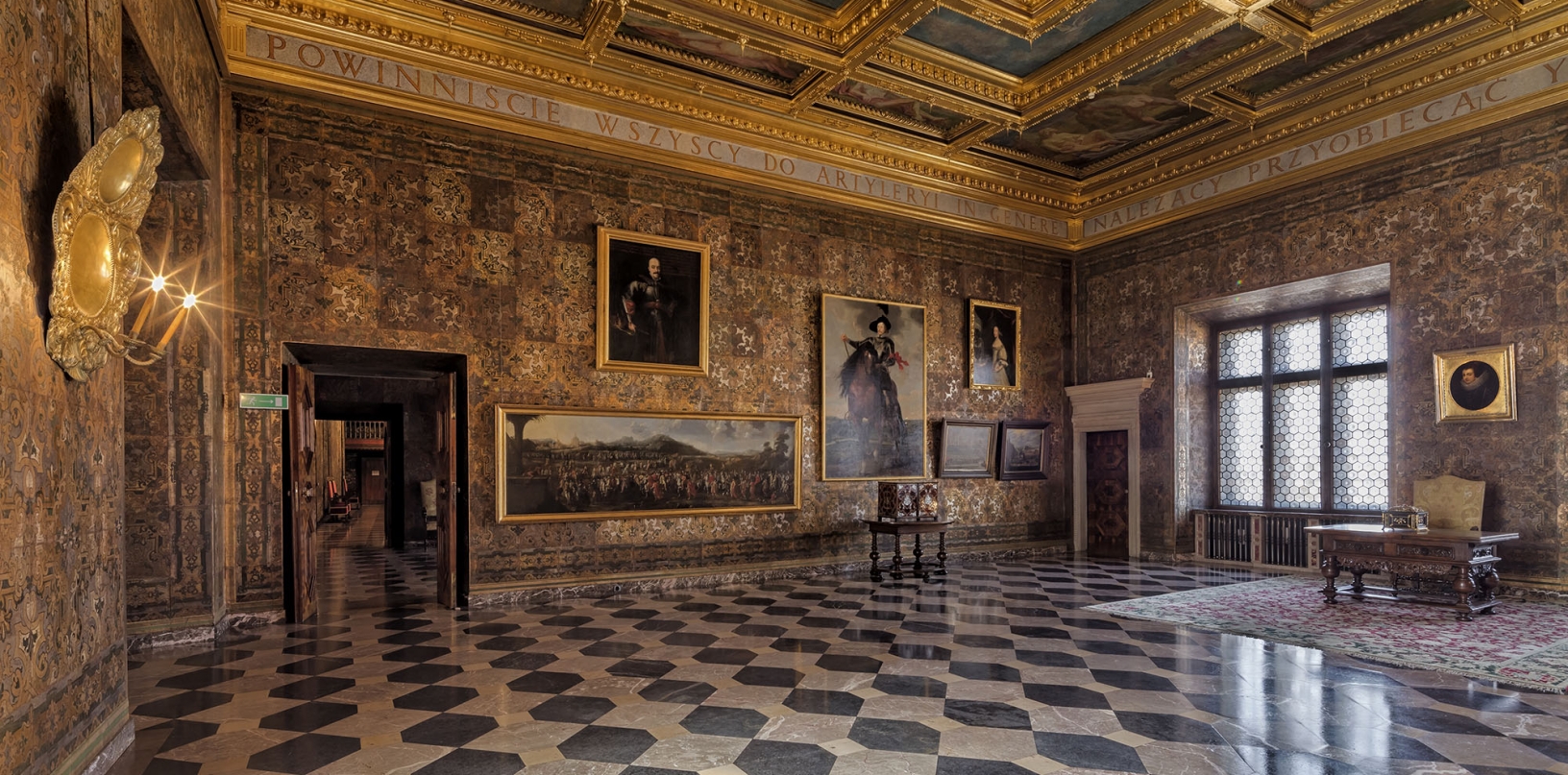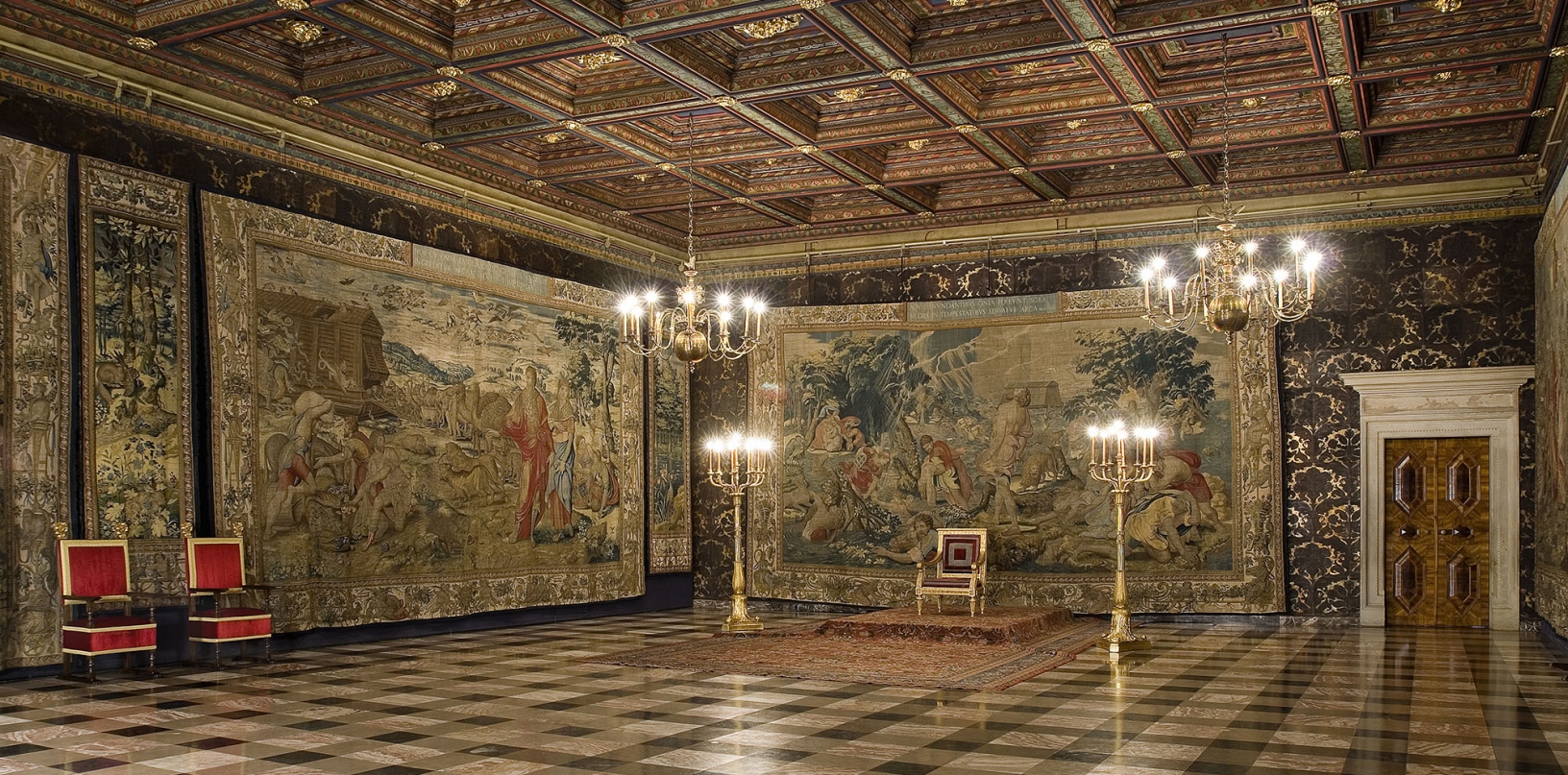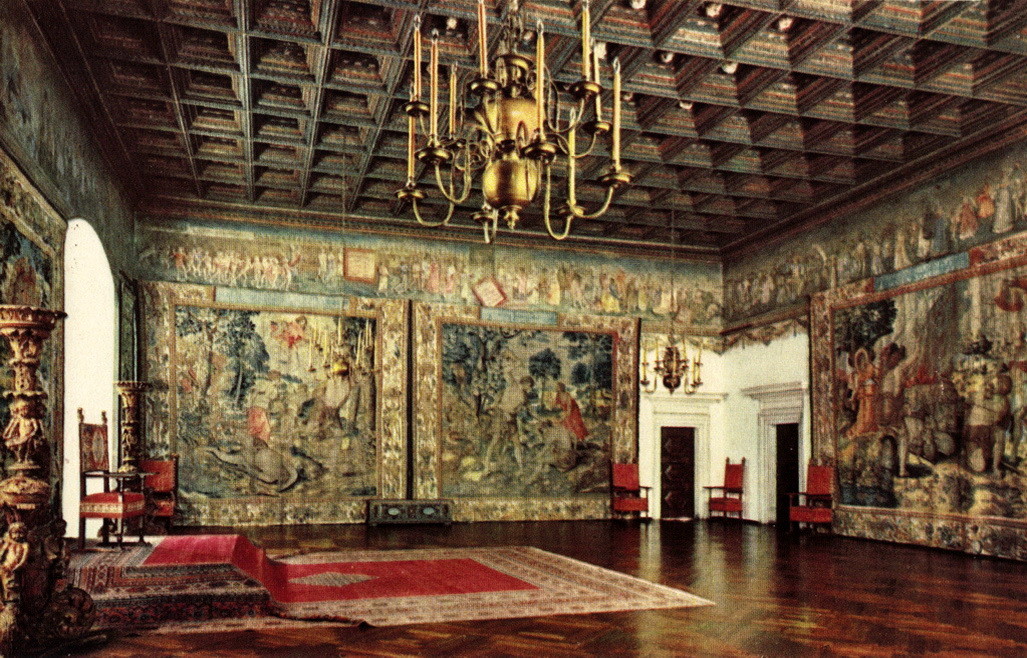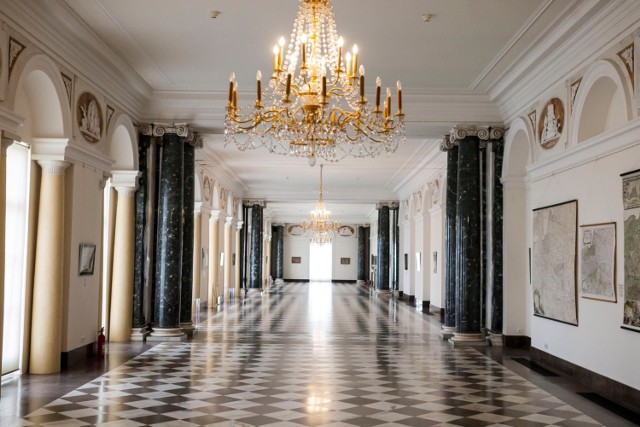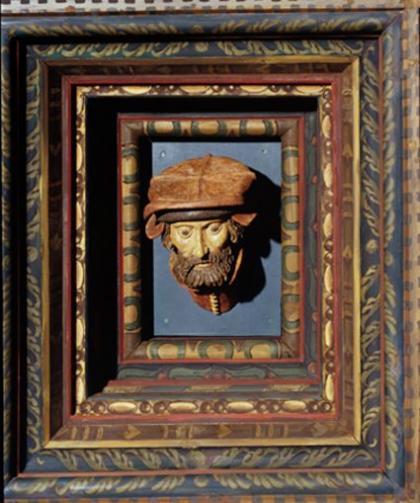|
|
Post by Bonobo on Jan 24, 2010 17:22:16 GMT 1
So far, through my pictures, you were able to see the exterior of the Wawel Castle and the interior of the Wawel Cathedral. polandsite.proboards.com/index.cgi?board=krakw&action=display&thread=266Today we went to the Wawel Castle again. On Sundays there is free admission to State Chambers and Lost Wawel exhibitions. Unfotunately, taking photos is forbidden inside the castle. I could take some when the guards weren`t looking but the quality would be poor so there was no sense. Instead, admire photos on the Net, although very few and often of poor quality. It seems the Wawel managers have a kind of the policy of containtment. Wawel Castle, State Chambers. They are big rooms where the kings, senators, politicians, diplomats used to gather for political meetings, hearings, balls and even theatre plays.
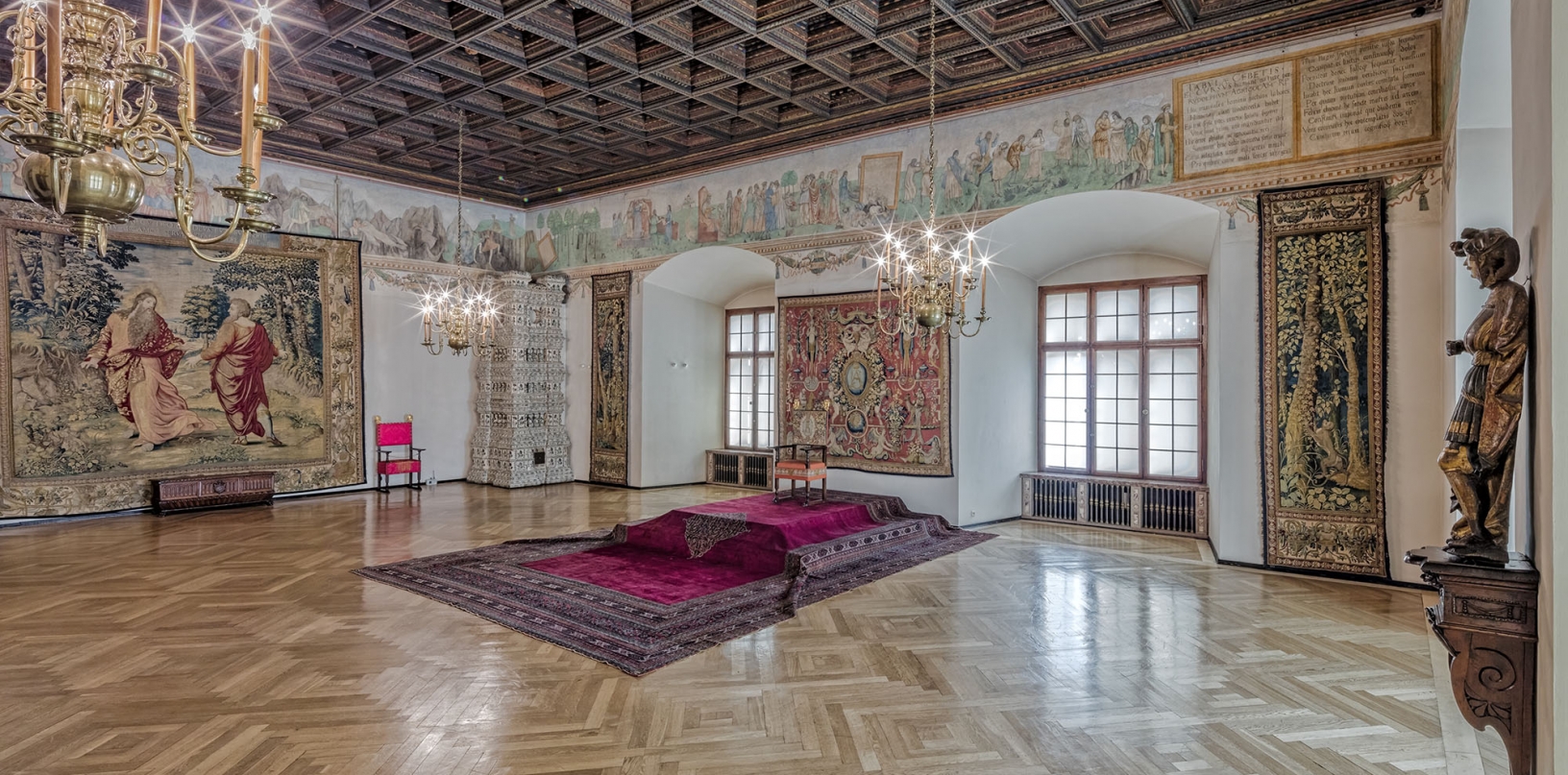 The Envoys’ Room The Envoys’ Room
Here sessions of the Lower House (Seym) were held in the presence of the king. The ceiling coffer, reconstructed in the first half of the 20th century, shows 30 woodcarvings of human heads created in 1540. The original ceiling - the work of Sebastian Tauerbach’s workshop - consisted of 194 of such sculptures (it was seriously damaged at the beginning of the 19th century). The wall frieze, which dates from the same period as the sculptures, depicting ‘The story of human life’, is an illustration of an ancient Greek text Tabula Cebetis. The tapestry entitled God speaking to Noah, from Sigismund Augustus’ collection, was made in the mid 16th century in Brussels based on a pattern by Michiel Coxcie. Renaissance portraits of King Sigismund the Old and of his daughter Anna Jagiello were painted by Marcin Kober. There is also an 18th century stove from the palace in Wiśniowiec.
The Eagle Room
A formal room, where during sessions of the Seym at Wawel, monarchs held a royal law court. The original ceiling with a carved eagle did not survive and was replaced by a new one in the inter-war period. There are portraits of the royals and paintings depicting 17th century historic scenes on the walls. Among these are The Entry of Jerzy Ossoliński into Rome and The Entry of Queen Marie-Louise Gonzaga into Gdańsk, both painted by Bartłomiej Milwitz. The Belgian tapestry (gobelin) The Death of Decius Mus was woven to a pattern by Rubens. 12. The Senator’s Hall 12. The Senator’s Hall
This largest room in the castle was originally designated for sessions of the Senate, important state and court ceremonies, royal weddings, theatre performances and balls. The first royal wedding, that of Sigismund I to Bona Sworza, took place here in 1518. The walls are decorated with large figural tapestries with biblical themes from Sigismund Augustus’ collection. A Classicist armchair has replaced the throne.
The descriptions are from official Wawel Castle site- check for morewww.wawel.krakow.pl/en/index.php?op=6,1,5 Wawel Lost exhibition reveals the remains of constructions which used to stand on Wawel hill in the past. Some fundaments and even walls are exposed and nice models show what lost buildings looked like. Read complete description of Wawel Lost on official Wawel Castle site:www.wawel.krakow.pl/en/index.php?op=10Other chambers, e.g., Treasury, Armory, Royal Apartments Wawel is famous for its tapestries from 16 century       The most valuable artefacts saved from the original Treasury are on display here: Szczerbiec - the coronation sword of Polish kings The most valuable artefacts saved from the original Treasury are on display here: Szczerbiec - the coronation sword of Polish kings  Copy of the Holy Lance aka Saint Maurice's Spear  Read about Armory and Treasury www.wawel.krakow.pl/en/index.php?op=8,1,5 About Royal apartments www.wawel.krakow.pl/en/index.php?op=7,1,5 Conscise info on the Museum: opening, hours, prices, etc www.krakow-info.com/wawel.htm |
|
|
|
Post by Bonobo on Mar 22, 2020 19:38:17 GMT 1
|
|
|
|
Post by jeanne on Mar 24, 2020 18:15:44 GMT 1
Very nice stove here! Not to mention all the other beautiful and historic items! |
|
|
|
Post by pjotr on Mar 24, 2020 19:18:07 GMT 1
Wow Bonobo, it reminds me of the Medieval youth (young boy books) novels I read of the Dutch author Cornelis Johannes Kieviet (8 March 1858 – 12 August 1931), a Dutch teacher and writer of children's literature. Adventurous books about nobel men, nobel women and knights in the Dutch Middle ages and vicious medieval scoundrels.
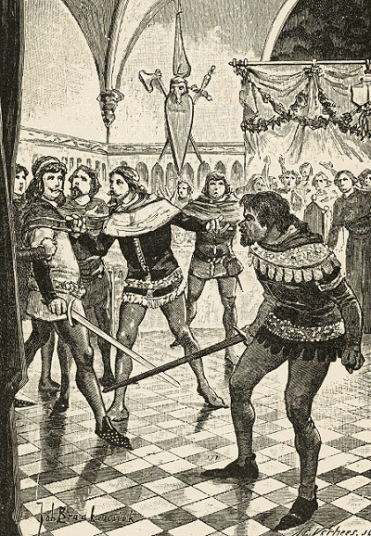 Fulco the Minstrel Fulco the Minstrel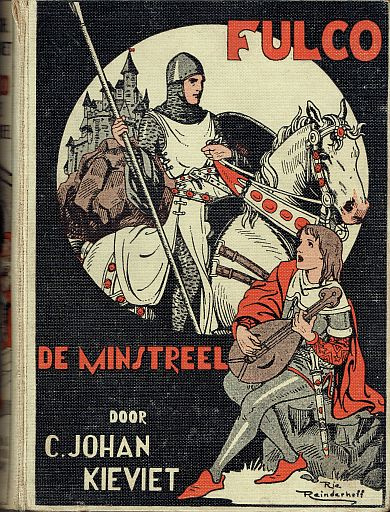 Fulco the Minstrel Fulco the Minstrel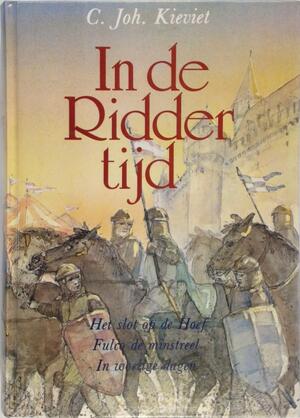 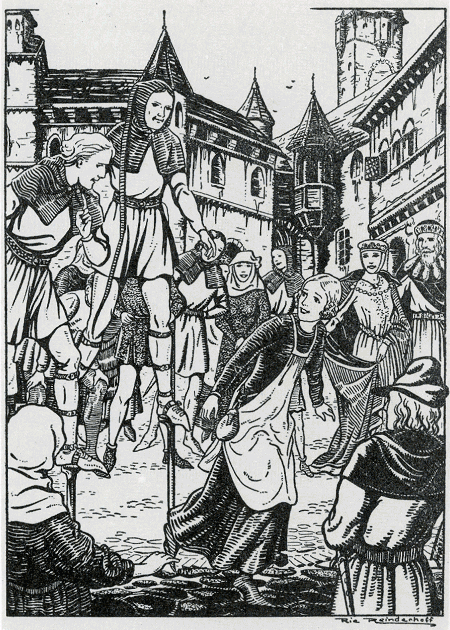 As a child I was totally fascinated and also scared and bewildered by the wild and dangerous Mideaval time with it's evil robber baron or robber knight (German: Raubritter; (z niem. rycerz rozbójnik) pl.wikipedia.org/wiki/Raubritter ) and it's Zbójnictwo ( pl.wikipedia.org/wiki/Zb%C3%B3jnictwo ), the Tribunal of the Holy Office of the Inquisition, the Medieval Plague, Feudalism and serfdom and the Medeaval fear of God and the powers of nature. Different times, let's go back to ours. As a child I was totally fascinated and also scared and bewildered by the wild and dangerous Mideaval time with it's evil robber baron or robber knight (German: Raubritter; (z niem. rycerz rozbójnik) pl.wikipedia.org/wiki/Raubritter ) and it's Zbójnictwo ( pl.wikipedia.org/wiki/Zb%C3%B3jnictwo ), the Tribunal of the Holy Office of the Inquisition, the Medieval Plague, Feudalism and serfdom and the Medeaval fear of God and the powers of nature. Different times, let's go back to ours.
Wonderful castle and catherdal at Wawel in Kraków.
Cheers,
Pieter
|
|
|
|
Post by Bonobo on Apr 2, 2020 10:16:11 GMT 1
As a child I was totally fascinated and also scared and bewildered by the wild and dangerous Mideaval time with it's evil robber baron or robber knight (German: Raubritter; (z niem. rycerz rozbójnik) pl.wikipedia.org/wiki/Raubritter ) and it's Zbójnictwo ( pl.wikipedia.org/wiki/Zb%C3%B3jnictwo ), the Tribunal of the Holy Office of the Inquisition, the Medieval Plague, Feudalism and serfdom and the Medeaval fear of God and the powers of nature.
Cheers,
Pieter Yes, those were my fascinations too, like everything connected with history which seemed so colourful juxtaposed to the dull reality of a communist state. But I haven`t given up them yet.   |
|
|
|
Post by Bonobo on Apr 2, 2020 10:21:24 GMT 1
Very nice stove here! Not to mention all the other beautiful and historic items! Yes, I posted it specially for you. As for other items, you should remember it was mostly reconstructed after partitions when Austrians arranged their army barracks in Wawel and after the WW2 when Germans stole some precious decorations. Fortunately, the buildings survived. See the difference: barracks  Today:   |
|
|
|
Post by jeanne on Apr 2, 2020 21:43:57 GMT 1
See the difference: barracks Today: The old image is posted, but I can't see the new image...what happened? Oh, and by the way, thanks for posting the photos with the stove!! |
|
|
|
Post by pjotr on Apr 4, 2020 13:19:02 GMT 1
As a child I was totally fascinated and also scared and bewildered by the wild and dangerous Mideaval time with it's evil robber baron or robber knight (German: Raubritter; (z niem. rycerz rozbójnik) pl.wikipedia.org/wiki/Raubritter ) and it's Zbójnictwo ( pl.wikipedia.org/wiki/Zb%C3%B3jnictwo ), the Tribunal of the Holy Office of the Inquisition, the Medieval Plague, Feudalism and serfdom and the Medeaval fear of God and the powers of nature.
Cheers,
Pieter Yes, those were my fascinations too, like everything connected with history which seemed so colourful juxtaposed to the dull reality of a communist state. But I haven`t given up them yet.   Bonobo, It seems we are kindred spirits. I was reading a lot in my Dutch child encyclopedia and my compact encyclopedia (20 volumes) and my fathers Dutch Winkler Prins encyclopedia. In the Belgian Ardennes mountains I played in the ruines of an old robber knight caste at Logne ( www.chateau-logne.be/en ) when it wasn’t locked yet and made a museum. It was quite high and even dangerous, because there were no fences nor barriers. I could fall in the deepness there of the mountain. I was very exited there in the late seventies and early eighties. Imagining that I was the robber knight fighting with invading forces of the Spanish Havsburg king Charles the Fifth. I was a weird pupil. Where other pupils hold their speech about their pet, hobby, their soccer club or other childish subjects I held speeches about the architecture of Castles, Romanesque and Gothic churches, the history of Pokand (basic) or the Russian revolution with the Bolshevics, Menshevics, Social revolutionary, Zemstwo, Kerensky and other elements. The teacher told me these speeches were not of my age. I was a bookworm, and interested in history and foreign affairs. Later a girlfriend of mine told me that this in the psychological and sociological sense had to do with the fact that I come from a bicultural (Dutch/Polish), international and thus intercultural family. From a young age I was aware of differences and that large sections of the family were living abroad. That fact had also to do with history and migration. My Polish American family is part of the large Polish migration from the 19th and 20th centuries. They are part of the 10 million Polish American diaspora. My interest in history also comes from all the historical movies, sitcoms, documentaries and news programs my parents watched on the Dutch and Belgian tv. And all the historical museums, cities, towns, villages, hamlets, castles, farm castles, palaces, historical buildings, bishop palaces, churches, cathedrals and old monasteries my parents showed me. The countries I visited in Europe; Netherlands, Belgium, England, France, Poland, Germany, Denmark, Italy, Austria, the Czech republic and Hungary, are full of Medeaval history. So my imagination is constantly fed during my 50 years living in Europe. Bo you will recognize this and your Poland 🇵🇱 is full of layers, scars, wounds, but also beautiful elements of that history. The traces of Bohemian influence, the influence of the German Burgher in Polish towns and cities, the Prussian Teutonic knights and their castles and settlements in Poland, the Italian Renaissance elements of the Italian architects and painters of Polish kings and magnates, the Tartars with their wooden green mosques, the Dutch Mennonite settlers and the Dutch influence in the Gdańsk architecture (Hanze trade ties), the Lithuanian Baltic influence, the Austrian Habsburg influence ( I felt that when I was in Kraków. That wonderful mix of Old Polish and new Polish architecture and culture -Pre Habsburg Medeaval Polish architecture and art-, the German element of the Burgher and the Habsburg element. Last but not least there is of course also the Ashkenazi Jewish element), the Ashkenazi jewish shtetl, towns and ghetto’s, and of course the Russian, Belarussian, Ukrainian elements. Like all over Europe you had the French element. The aristocracy and diplomats spoke French in old Europe. French was the language of the Corps diilomatique, European monarchs (Kaisers and Kings and Queens), the European nobility (Dukes, counts, earls and barons), presidents and ministers. In the 20 th century French and German (also an European communication language between various nationalities) were replaced by British and American English. Next to all these influence to a lesser extend you had some Greek, Armenian, Georgian, Turkish (Ottoman diplomats and merchants in Poland. The Ottoman empire didn’t recognised the partitition of Poland and respected the Polish nation and people, because you had Polish Jantsars in the Ottoman army), English and American influences in Poland in the 19th and 20th centuries. Cheers, Pieter |
|
|
|
Post by pjotr on Apr 4, 2020 13:39:34 GMT 1
I mentioned all the foreign influences in Poland. But Poland itself had one of the earliest forms of aristocratic democracy, it’s own Western Slavic Polish Roman Catholic civilization and next to that the incredibly rich culture of the Polish Ashkenazi jews.
Poles, Germans and jews were the corner stones of old Poland. These 3 groups had an uneasy coexistance, but together in my opinion they laid the foundation for Modern Poland in the 21th century. For many Poles that history isn’t easy and it is’nt easy to recognize the huge presence of the German and Jewish minorities in the past and their contributions to Poland.
A forth group are of course the Ukrainians. They are a minority in South-Eastern Poland and before the war they were a large minority in Eastern Poland. In Pre war Lwów the Ukrainians made up 1/3 of the population, the Poles also 1/3 and the Polish jews 1/3 also.
Ukrainians were different with their Eastern Orthodox looking Greek Catholic churches and Russian sounding, Eastern Slavic language an Cyrillic alphabet. Today they are construction workers who build Warsaw sky skrapers, Polish highways and work in Polish factories. The world and Poland is changing.
|
|
|
|
Post by Bonobo on Jun 16, 2020 17:27:28 GMT 1
The old image is posted, but I can't see the new image...what happened? it has been happening quite often here. Photos which don`t end with .jpg show up in the forum for a while after posting but later tend to disappear. I guess it is some built-in protection of legal owners against using them by external sources. Look at it again. |
|
|
|
Post by jeanne on Aug 5, 2020 20:22:19 GMT 1
The old image is posted, but I can't see the new image...what happened? it has been happening quite often here. Photos which don`t end with .jpg show up in the forum for a while after posting but later tend to disappear. I guess it is some built-in protection of legal owners against using them by external sources. Look at it again. It did show up, and I did see the new image. Several years ago, a made-for-TV movie about John Paul II was filmed in Poland, and there were a couple of scenes shot in this courtyard. There was one scene I remember of seminarians running along the upper portico and looking at the departing Germans...they were expressing their relief at their departure, but the Cardinal who was with them was expressing his worry at who would replace them, and he was right to worry... |
|
|
|
Post by Bonobo on Aug 29, 2020 19:35:53 GMT 1
they were expressing their relief at their departure, but the Cardinal who was with them was expressing his worry at who would replace them, and he was right to worry... hahaha first I didn`t understand your words, I thought by that prophetic "worry" you mean the lack of priests and collapse of religion in modern Poland, hahaha now I know you meant the end of Nazi German occupation and the beginning of communism in post-war Poland. buhahaha |
|
|
|
Post by jeanne on Sept 13, 2020 20:14:44 GMT 1
they were expressing their relief at their departure, but the Cardinal who was with them was expressing his worry at who would replace them, and he was right to worry... hahaha first I didn`t understand your words, I thought by that prophetic "worry" you mean the lack of priests and collapse of religion in modern Poland, hahaha now I know you meant the end of Nazi German occupation and the beginning of communism in post-war Poland. buhahaha Right...you got it!  |
|


